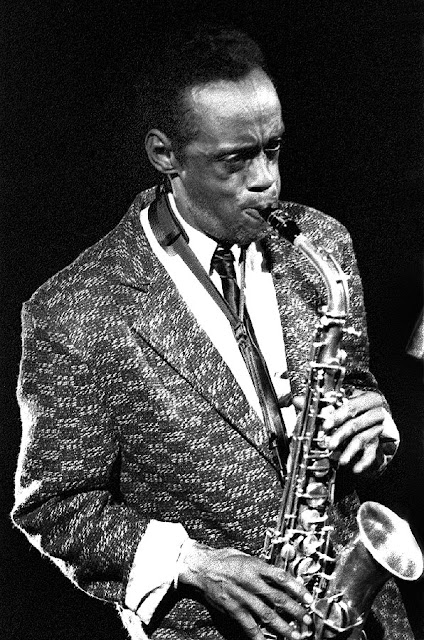 |
| Chris Buck, Parkdale, Toronto, June 1990 |
MY GOOD FRIEND CHRIS BUCK HAD HIS BIRTHDAY THIS WEEK, and as I promised a year ago at this time, I thought I'd dig out some more portraits I took of him back when we were young photographers, testing out film and equipment with each other as subjects. I found these buried in a binder of unedited slides, and found them interesting, if only for technical reasons.
They were taken in my Parkdale studio, shortly before Chris moved to New York. We were constantly on the search for any technical or creative edge we could find while still searching for something like a unique style, and while playing around with cross-processing, old cameras and alternate printing processes, we came across Polaroid's line of instant slide films.
 |
| Chris Buck, Parkdale, Toronto, June 1990 |
Polachrome (the colour film) and Polapan (the black and white version) looked like regular 35mm canister film, but had to be developed with a hand-cranked film processor and a pack of processing chemicals. Eager for any sort of edge we could find, we both bought a batch and went to work in my studio/bedroom, setting up seamless backdrops and strobe lights.
If you zoom in close on the colour scans, you'll notice the very wide grain, separated into red, green and blue. It was a film-chemical process, but the result anticipated digital photography for some reason I can't explain. It produced a pointillist sort of effect that I very much liked, but after testing the film out with a variety of filters and exposures, I think we both came to the conclusion that it was risky to work with, mostly because we couldn't guarantee a consistent result that we could sell to a client.
The black and white film, on the other hand, had a remarkable smoothness - a grain-free texture that was reminiscent of Polaroid's Type 55 positive/negative film. Unfortunately both films left a notable amount of debris on the film - a cinch to Photoshop away today, but a deal-breaker back in the days of drum scanners, before digital image processing was cheap and easy.
The black and white film, on the other hand, had a remarkable smoothness - a grain-free texture that was reminiscent of Polaroid's Type 55 positive/negative film. Unfortunately both films left a notable amount of debris on the film - a cinch to Photoshop away today, but a deal-breaker back in the days of drum scanners, before digital image processing was cheap and easy.
 |
| Chris Buck, Parkdale, Toronto, June 1990 |
Chris was - still is, I'm sure - a ham in front of the camera. These are a selection of some of the more restrained poses from the slides. I promised him I would try to respect his dignity when choosing photos for these posts.
I think Chris must have been going through a Morrissey period when I took quite a few of our portraits of each other, but since I didn't have vases of gladioli sitting around the studio, he had to make do with looking moody and a bit diva-esque.
 |
| From the #bucklikeness Instagram series - photos by Chris Buck, 2015 |
He's having more fun with this than I think he'd like to admit. And for the first time I think he's found a subject that's as pliant and cooperative as he's always wanted.
AN APPEAL: This blog is celebrating its first anniversary, and hard use has taken its toll on my old HP scanner, which now only produces clear scans on a narrow strip on the right margin of its glass. I'm on the market for a new scanner, but the only comparable replacement costs several hundred dollars beyond my budget, so I'm asking anyone who's enjoyed what I've been doing here - and wants to see more - if they can chip in and help. There's a PayPal button up near the top, and anything would be appreciated. Also, if you feel moved, please click on my Amazon.com links - a small percentage of anything you buy helps fund this blog. Thank you so much in advance.










































